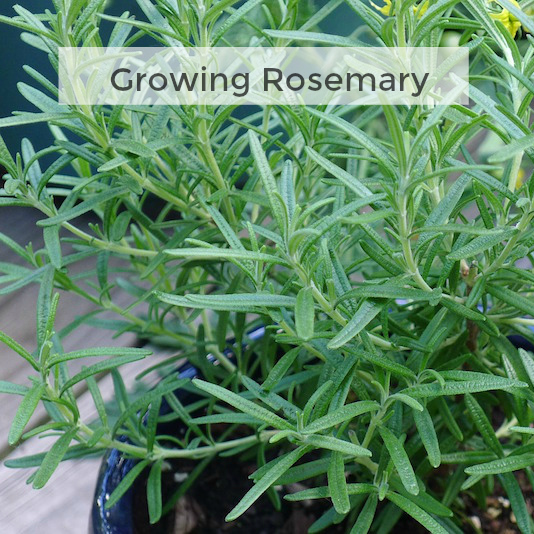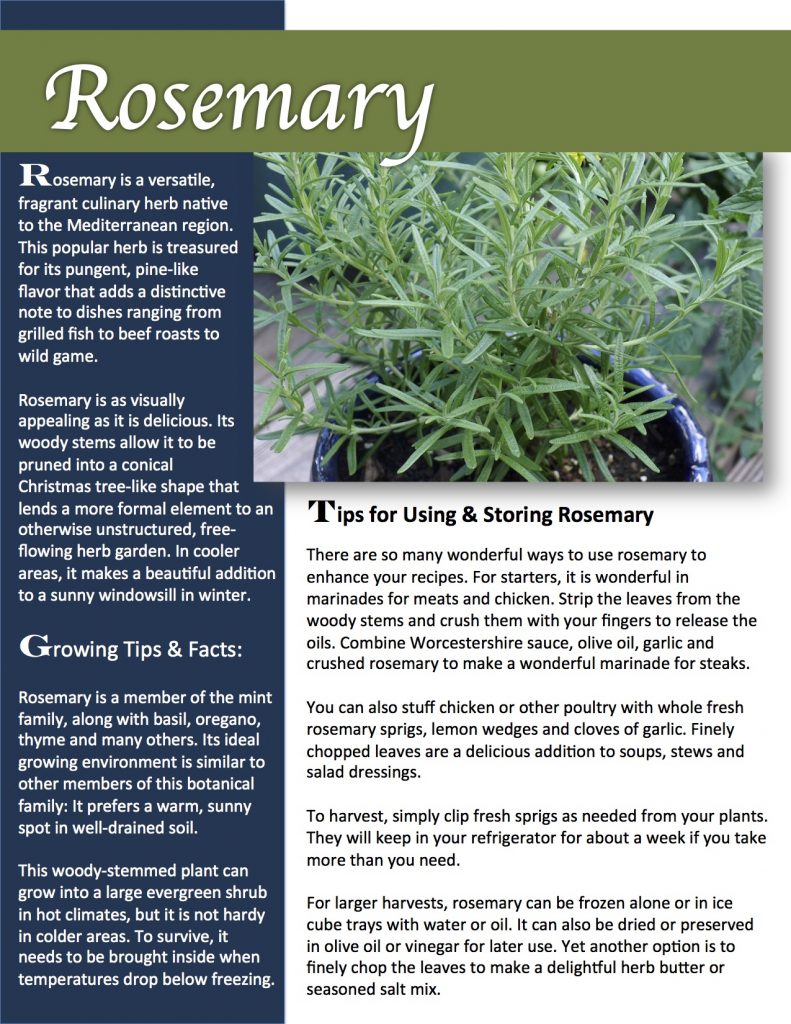
Rosemary is a versatile, fragrant culinary herb native to the Mediterranean region. This popular herb is treasured for its pungent, pine-like flavour that adds a distinctive note to dishes ranging from grilled fish to beef roasts to wild game.
Rosemary is as visually appealing as it is delicious. Its woody stems allow it to be pruned into a conical Christmas tree-like shape that lends a more formal element to an otherwise unstructured, free flowing herb garden. In cooler areas, it makes a beautiful addition to a sunny windowsill in winter.
Growing tips and facts
Rosemary is a member of the mint family, along with basil, oregano, thyme and many others. Its ideal growing environment is similar to other members of this botanical family: It prefers a warm, sunny spot in well-drained soil.
This woody-stemmed plant can grow into a large evergreen shrub in hot climates, but it is not hardy in colder areas. To survive, it needs to be brought inside when temperatures drop below freezing.
Tips for using and preserving rosemary
There are so many wonderful ways to use rosemary to enhance your recipes. For starters, it is wonderful in marinades for meats and chicken. Strip the leaves from the woody stems and crush them with your fingers to release the oils.
Combine Worcestershire sauce, olive oil, garlic and crushed rosemary to make a wonderful marinade for steaks.
You can also stuff chicken or other poultry with whole fresh rosemary sprigs, lemon wedges and cloves of garlic.
Finely chopped leaves are a delicious addition to soups, stews and salad dressings.
To harvest, simply clip fresh sprigs as needed from your plants. They will keep in your refrigerator for about a week if you have more than you need.
For larger harvests, rosemary can be frozen alone or in ice cube trays with water or oil. It can also be dried or preserved in olive oil or vinegar for later use.
Yet another option for preserving rosemary is to finely chop the leaves to make a delightful herb butter or seasoned salt mix.


[…] bin where you can adjust the humidity and temperature levels. This works especially well for rosemary and thyme, but I’ve also stored fresh chives this […]